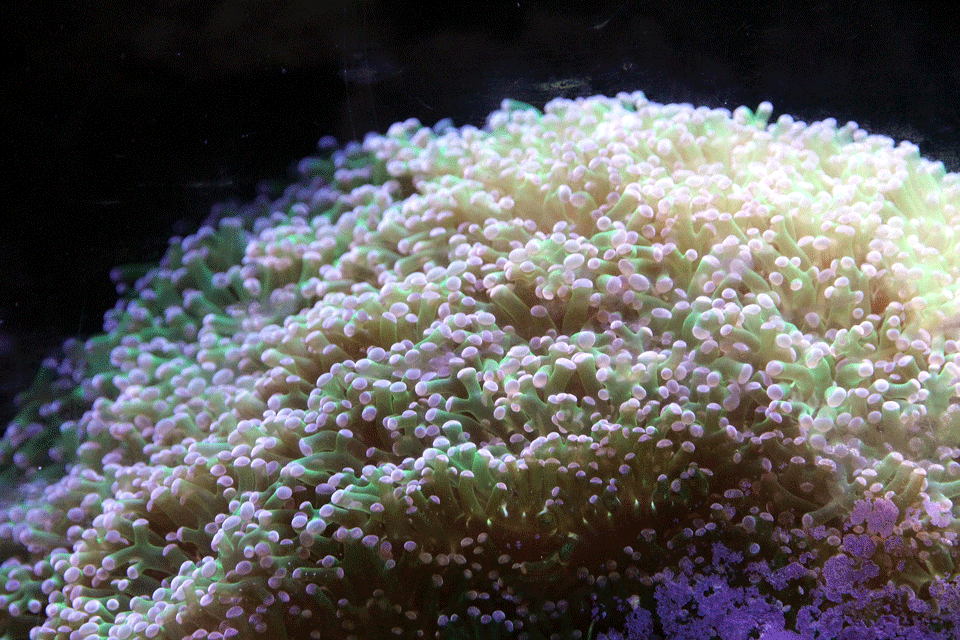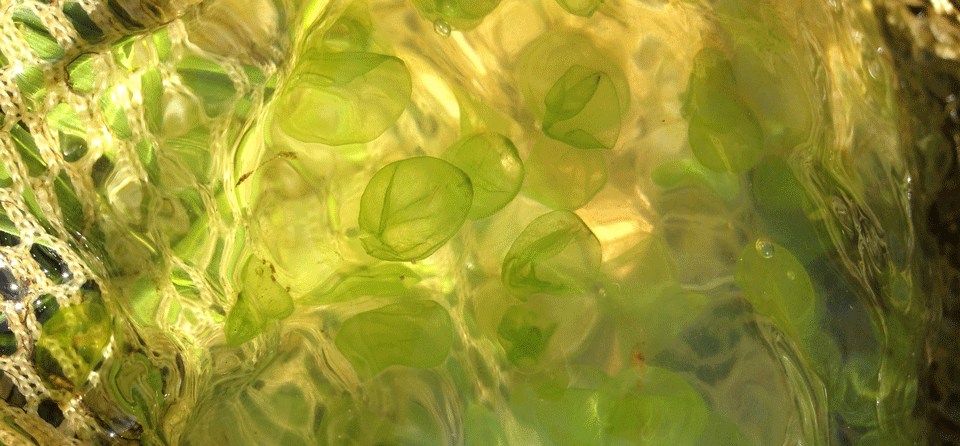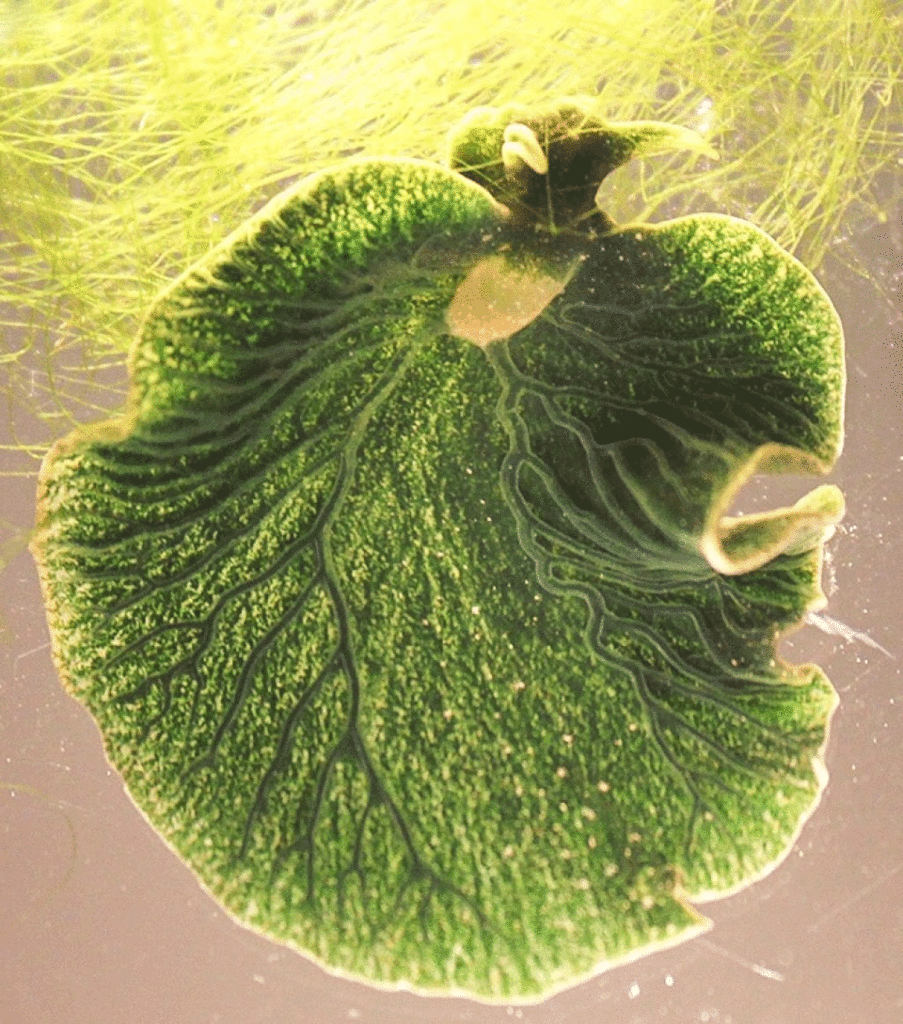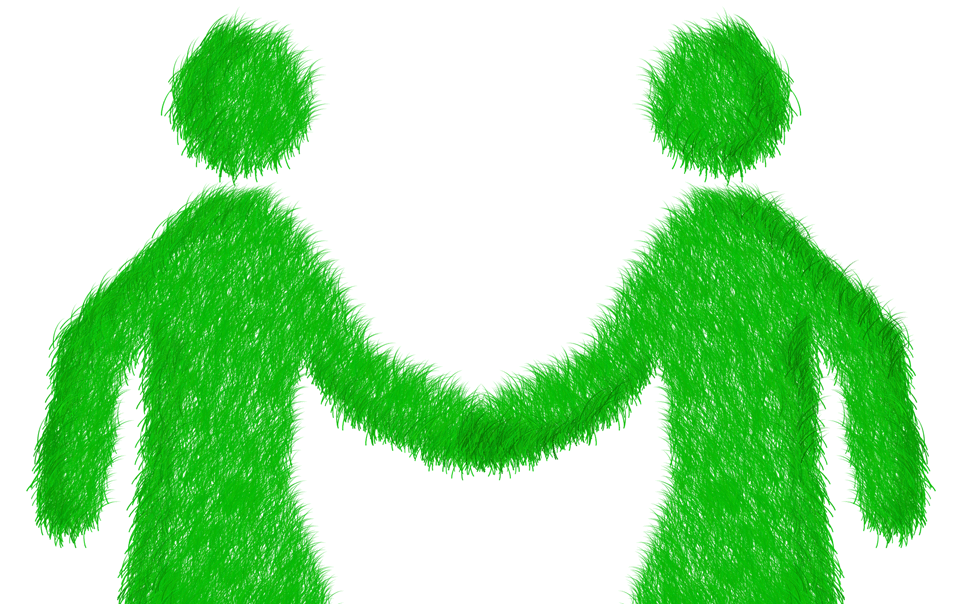“We have met the little green men from outer space, and they are us.” (Village of the Chosen)
In 1983, Alan Dean Foster published a science fiction story called the Village of the Chosen.* In it people are able to photosynthesise. The utopian story held that “With our friendly alga as a partner, everyone on Earth can produce enough food for his or her own body… Everyone will be a pleasant shade of green. No more raising and slaughtering of animals for food.” Fast forward 30 years and with the development of the field of synthetic biology (the creation, construction and controlling of simple-cell organisms) http://collinslab.mit.edu/files/nrm_cameron.pdf and https://www.humansandnature.org/synthetic-biology-origin-scope-and-ethics, does this mean that the vision of photosynthesis in humans is more possible? If it were so – what would it do to global society?
In photosynthesis green plants and algae absorb light energy from the sun and convert it into chemical energy. Leaf cells contain chloroplasts, which contain green chlorophyll which absorbs and is excited by the light energy which then convert carbon dioxide and water into glucose and oxygen. Oxygen is released from the plant and the glucose is stored in carbohydrate cells for energy for growth.

Although associated with plants, there are a few animals who are able to use photosynthesis. Corals, for example, use photosynthesis by symbiosis – they are colonies of soft bodied animals with photosynthetic dinoflagellates – single celled symbiotic algae, zooxanthellae – living within their cell tissues. The algae provide energy and absorb nutrients for the corals, in return for a safe, nutrient-rich environment. https://oceanservice.noaa.gov/education/kits/corals/coral02_zooxanthellae.html

The spotted salamander’s eggs grow within an algae rich jelly capsule; the algae also invade the cells of the embryos. Photosynthesis produces eggs and oxygen for the salamander embryos in return for a nitrogen rich environment for the algae. http://www.fllt.org/the-symbiotic-relationship-of-algae-and-spotted-salamanders/
While a photosynthetic symbiotic relationship may be difficult for humans to maintain, we might be able to “hack the chlorophyll”. At present we hack genes from one organism to another in labs https://royalsociety.org/topics-policy/projects/gm-plants/what-is-gm-and-how-is-it-done/ , producing genetically modified plants and animals such as bananas that carry vaccines and animals that glow-in-the-dark https://biologywise.com/interesting-examples-of-genetic-engineering . There is an animal that also hacks genes.

The sea slug – Elysia chlorotica – is able to live on sunshine for months. It consumes algae and embeds the algae’s chloroplasts into its own digestive cells. Hacking the DNA of the algae, it incorporates the algae codes for chloroplast proteins and chlorophyll synthesis into its own chromosomes. https://phys.org/news/2015-02-sea-slug-genes-algae-photosynthesize.html Could we use a similar technique to enable humans to photosynthesise?
In 2011 synthetic biologists experimented with baby zebrafish. https://www.ncbi.nlm.nih.gov/pmc/articles/PMC3080389/ Photosynthetic bacteria was injected into zebrafish embryos. Although the fish didn’t photosynthesise, neither did the bacteria kill them, as similar experiments with E. Coli bacteria had done. Artificially created plant-animal hybrids may be possible.
If we could photosynthesise, would we? What would it do to society if we were to draw our energy from the sun?
If humans were able to photosynthesise, starvation, malnutrition and food related sickness and death could potentially be eradicated. It is estimated that 815 million people around the world currently live without enough food to eat. Globally, 98% of the world’s undernourished people live in developing countries and nearly half of all deaths of children under the age of five – 3 million children a year – is due to malnutrition. http://www.thp.org/knowledge-center/know-your-world-facts-about-hunger-poverty/
Would countries that have the highest duration of sunshine, see an upsurge in their economy and population? Or would that upsurge in population threaten the stability of a country as other resources, such as water and land to build on became even more important? Would the shift in large populations to warmer climates create further political instability and change who counted as Global Powers?
Would people living in the UK move or invest in boosts of artificial light? Would energy consumption increase, especially in wintertime, with its knock-on effects on the environment – or would the energy we used to put into producing and processing food and cooking, balance out the change in need for artificial light and regulated temperature?
Whole industries would change or die, with knock-on economic effects. No more time spent on food shopping, less time socialising based on food. Would it be “Sun-Off” instead of “Bake-Off”? Would we go to sun bars rather than restaurants or have Nutri-to-Go (nutritional supplements) instead of takeaways? Nutritional supplements would still be essential – plants do not live on photosynthesis alone.
At present we intensively farm animals for food and land for crops. It is estimated, for example, that 62 million chickens are born every day around the world https://www.bbc.co.uk/news/science-environment-44412495 . Without the need to eat meat there would be a serious reduction in the number of animals in existence. Without humans or animals needing cereals and crops and with far fewer animals to keep down growth in the fields, the countryside would drastically change. As natural ecosystems reverted what would the countryside look like?
With the “New Order”, would access to natural daylight – and the time to absorb it – define the haves and have-nots of the world?
The reality is that, even if we could photosynthesise, it is unlikely that humans could live on photosynthesis (and nutrient supplements) alone. The genetic engineering required to allow a human to accept chloroplast genes would be extreme; a large surface area to volume ratio is needed to capture light energy https://www.bbc.com/education/guides/z8dpqhv/revision/1 and human behaviour would have to change radically even if we became solar couch potatoes – trees only store about 200 calories in glucose a day. We use far too much energy to gain it all from photosynthesis. https://www.reddit.com/r/askscience/comments/2fb2uz/have_we_ever_measured_the_caloric_intake_of_a_tree/
If photosynthesis could become a reality, it is more likely to be as an “energy supplement”. A boost when we need to heal, or perhaps when we are playing sports, or perhaps, in some countries, the difference between someone dying of hunger and surviving until the new harvests are in. If photosynthesis were available on those terms, would you go green?
Anyone for a little “light” supper?
*Alan Dean Foster, Village of the Chosen published in The Best of Omni 1983, and a volume of short stories …Who Needs Enemies 1984.






